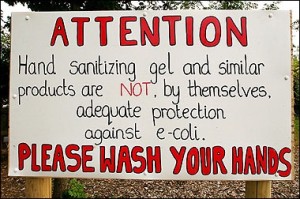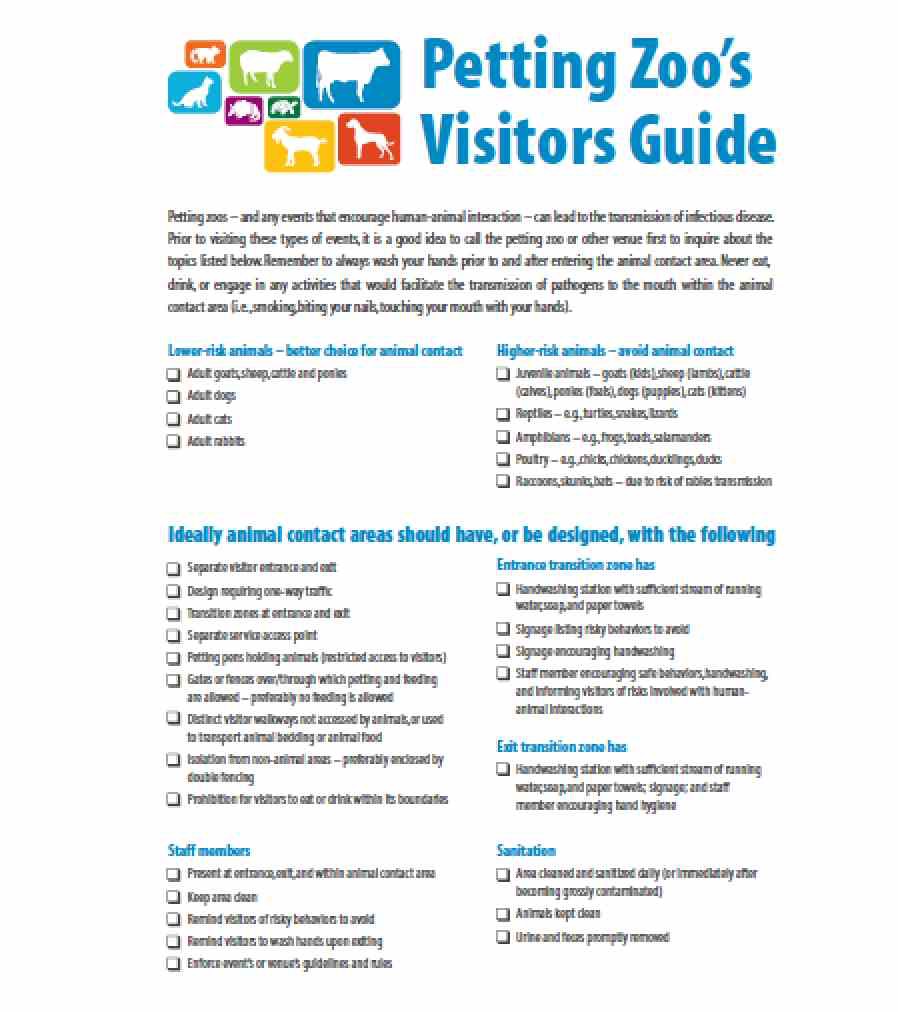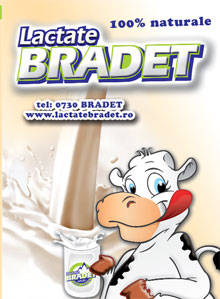Here’s one from the barfblog.com archives, and now that we’ve surpassed 70,000 direct subscribers in 70 countries, it’s worth a mention.
 Oh, and FDA announced Friday it’s going to take another look at pathogens in produce from manure.
Oh, and FDA announced Friday it’s going to take another look at pathogens in produce from manure.
In the fall of 1998, I accompanied one of my then four daughters on a kindergarten trip to the farm. After petting the animals and touring the crops – I questioned the fresh manure on the strawberries that were about to be picked – we were assured that all the food produced was natural. We then returned for unpasteurized apple cider. The host served the cider in a coffee urn, heated, so my concern about it being unpasteurized was abated. I asked: “Did you serve the cider heated because you heard about other outbreaks and were concerned about liability?” She responded, “No. The stuff starts to smell when it’s a few weeks old and heating removes the smell.”
The U.S. Food and Drug Administration (FDA or we) is requesting scientific data, information, and comments that would assist the Agency in its plan to develop a risk assessment for produce grown in fields or other growing areas amended with untreated biological soil amendments of animal origin (including raw manure).
The risk assessment will evaluate and, if feasible, quantify the risk of human illness associated with consumption of produce grown in fields or other growing areas amended with untreated biological soil amendments of animal origin that are potentially contaminated with enteric pathogens, such as Escherichia coli O157:H7 or Salmonella. The risk assessment also will evaluate the impact of certain interventions, such as use of a time interval between application of the soil amendment and crop harvest, on the predicted risk. The risk assessment is intended to inform policy decisions with regard to produce safety.
 Dates: Submit either electronic or written comments and scientific data and information by May 3, 2016.
Dates: Submit either electronic or written comments and scientific data and information by May 3, 2016.
The instructions for how to submit comments are available in the Federal Register notice as is additional supplementary information:
Biological soil amendments of animal origin (BSAAO) can be a source of contamination of produce with pathogens that can cause human illness. Human pathogens in BSAAO, once introduced to the growing environment, may be inactivated at a rate that is dependent upon a number of environmental, regional, and other agricultural and ecological factors. The rate of pathogen population decline over time is also influenced by the types of BSAAO and application methods. Furthermore, the types of produce and whether or not BSAAO may come into contact with a harvestable portion of the crop influences the likelihood of pathogen transfer from the amended soil to produce (Ref. 1).
Some produce farms use untreated BSAAO for various reasons, including that they are inexpensive, readily available, and rich nutrient sources for growing crops. Whether it is feasible for a farm to use untreated BSAAO as a principal nutrient source depends on numerous factors, including whether there is a required time interval between application and harvest and the length of such an interval (which may affect the nutrients retained or available from BSAAO), and crop nutrient demand (i.e., the nutrients needed to support crop growth). Typical examples of untreated BSAAO are raw cattle manure, poultry litter, swine slurry, and horse manure. FDA acknowledges that required application intervals for certain uses of untreated BSAAO could influence the number of crop cycles a farm is able to undertake each year and/or the choices farms make regarding which type of amendment to apply (e.g., raw manure, composted manure, or other nutrient sources).
In January 2013, based in part upon authority provided by the FDA Food Safety Modernization Act, we published a proposed Produce Safety Rule entitled “Standards for the Growing, Harvesting, Packing, and Holding of Produce for Human Consumption” (78 FR 3504, January 16, 2013). Among other provisions related to BSAAO, the proposed rule included at § 112.56(a)(1)(i) (21 CFR 112.56(a)(1)(i)) a 9-month minimum application interval for untreated BSAAO applied in a manner that does not contact covered produce during application and minimizes the potential for contact with covered produce after application (78 FR 3504 at 3637). In response to public comments, we withdrew this proposed 9-month minimum application interval in a supplemental proposed rulemaking that we published on September 29, 2014 (79 FR 58434 at 58457 through 58461). In the supplemental proposed rule, we acknowledged the limited body of currently available scientific evidence relating to the proposed 9-month interval and the need for additional research in this area, and described our planned risk assessment and research agenda (79 FR 58434 at 58460 through 58461). Accordingly, we deferred our decision on an appropriate minimum application interval.
 On November 27, 2015, we published a final Produce Safety Rule entitled “Standards for the Growing, Harvesting, Packing, and Holding of Produce for Human Consumption,” (80 FR 74354). The final rule is now codified at 21 CFR part 112. In the preamble to the final rule, we restated our decision with respect to the appropriate minimum BSAAO application interval (80 FR 74354 at 74463). We reserved one of the provisions in the final rule’s Subpart F (Biological Soil Amendments of Animal Origin and Human Waste) because we continue to believe that a quantitative application interval standard is necessary and anticipate locating such a future standard in that provision. As finalized, the Produce Safety Rule establishes that there is no minimum application interval required when untreated BSAAO are applied in a manner that does not contact covered produce during or after application (§ 112.56(a)(1)(ii)), and the minimum application interval is [reserved] when applied in a manner that does not contact produce during application and minimizes the potential for contact with produce after application (§ 112.56(a)(1)(i))
On November 27, 2015, we published a final Produce Safety Rule entitled “Standards for the Growing, Harvesting, Packing, and Holding of Produce for Human Consumption,” (80 FR 74354). The final rule is now codified at 21 CFR part 112. In the preamble to the final rule, we restated our decision with respect to the appropriate minimum BSAAO application interval (80 FR 74354 at 74463). We reserved one of the provisions in the final rule’s Subpart F (Biological Soil Amendments of Animal Origin and Human Waste) because we continue to believe that a quantitative application interval standard is necessary and anticipate locating such a future standard in that provision. As finalized, the Produce Safety Rule establishes that there is no minimum application interval required when untreated BSAAO are applied in a manner that does not contact covered produce during or after application (§ 112.56(a)(1)(ii)), and the minimum application interval is [reserved] when applied in a manner that does not contact produce during application and minimizes the potential for contact with produce after application (§ 112.56(a)(1)(i))
FDA, in consultation with the U.S. Department of Agriculture, is conducting a risk assessment to evaluate the risk of human illness associated with the consumption of produce grown in growing areas amended with untreated BSAAO that are potentially contaminated with enteric pathogens such as E. coli O157:H7 or Salmonella. The risk assessment will evaluate the impact of different agricultural and ecological conditions and certain interventions, such as use of a time interval or intervals between application of untreated BSAAO and crop harvest, on the predicted risk. The risk assessment will take into account available data and information on relevant steps in the produce food safety continuum including: The initial prevalence and levels of pathogens in untreated BSAAO; the methods used to apply untreated BSAAO to soils; pathogen survival (and growth) in untreated BSAAO and soils amended with untreated BSAAO; pathogen transfer to produce grown in amended soils; pathogen survival and growth on produce; and pathogen survival, growth, and cross-contamination during storage and other steps in the supply chain (e.g., washing). The risk assessment will include characterization of the variability and uncertainty of pathogen survival and growth under different agricultural and ecological conditions (e.g., soil types, application methods, or geographic locations/climatic factors) and time intervals between application of untreated BSAAO and crop harvest. The risk assessment is intended to inform policy decisions with regard to produce safety.
FDA is requesting comments and scientific data and other information relevant to this risk assessment. We are particularly interested in scientific data and information concerning, but not limited to, the following factors that may affect the risk of human illness associated with the consumption of produce grown in fields or other growing areas amended with untreated BSAAO (including raw manure):
- Data on the prevalence and levels of pathogens.
- The frequency of detecting the presence of pathogens in untreated BSAAO and soil amended with BSAAO, such as Salmonella in poultry litter, and E. coli O157:H7 and other pathogenic Shiga-toxin producing E. coli in cattle manure. Samples may be obtained at different stages of untreated BSAAO storage prior to application, or after application. If available, for each data point, we also invite information regarding the following:
The type of untreated BSAAO (e.g., animal origin and content);
how the untreated BSAAO, including raw manure, was sampled and handled prior to analysis;
the size of the analytical unit (i.e., detection limit) and test method;
the number of positives, the total number of samples, and the time period in which the testing was conducted; and sampling protocol (e.g., simple random, stratified random, targeted).
- The pathogen concentration, i.e., the number of pathogen cells per amount (unit volume or weight), in contaminated untreated BSAAO or soil amended with untreated BSAAO, especially cattle manure and poultry litter. If available, for each data point, we ask that the data be provided in unaggregated form and that Most Probable Number (MPN) patterns as well as raw data (e.g., number of positive and negative tubes per serial dilution) be provided.
- Data and information on survival of pathogens (e.g., Salmonella, E. coli O157:H7), and pathogen transfer to produce.
- Kinetic data that describe the survival (or inactivation) or growth of pathogens in untreated BSAAO, especially cattle manure and poultry litter;
- Kinetic data that describe the survival (or inactivation) or growth of pathogens in soil amended with untreated BSAAO, especially cattle manure and poultry litter, as influenced by soil type, untreated BSAAO type, application method, geographic locations/climatic factors (e.g., temperature, days of sunlight, intensity of solar irradiation, moisture, rainfall) and other factors;
- The mechanisms for pathogen transfer from soils to specific types or categories of produce, such as leafy greens, or to produce generally, and associated transfer coefficients, including irrigation and rain water splash, direct contact between produce and soil, machinery or people or animals contaminated by soil and directly contacting produce during growth and harvest of produce;
- Pathogen transfer rates (i.e., transfer coefficients) from amended soils to specific types or categories of produce, such as leafy greens, or to produce generally, as influenced by soil type, untreated BSAAO type, application method, climate factors, commodity type or any other pertinent factors not listed here;
- The survival of pathogens on produce in the field or other growing area before harvest; and
- The variability in the survival of different Salmonella serotypes, different subtypes of E. coli O157:H7, or other pathogens of public health significance in amended soils under field, greenhouse, or laboratory conditions.
- On-farm practices with regard to the use of untreated BSAAO, including, but not limited to, the following aspects.
- The extent to which untreated BSAAO are used in different regions in the United States, as well outside the United States in regions that export produce to the United States;
- The types of untreated BSAAO and the soil type, and associated physical and chemical parameters (including but not exclusive to nutrient content, moisture and pH); and the crops typically grown in each BSAAO-amended soil type;
- Characterization of the proportion of produce farms that have one or more soil types per geographical location;
- The amount of untreated BSAAO applied per unit surface (e.g., per acre) or the ratio of untreated BSAAO/soil, including typical ratio and variability by commodity type, including, for example, row crops such as leafy greens;
- The time of year, number of applications, and amount of untreated BSAAO that are applied;
- The method of application (e.g., surface, incorporated), and whether or not the amended soil is covered (e.g., with plastic mulch);
- Produce commodity type and cropping cycles;
- Climate conditions and irrigation practices after soil is amended, before and after planting; and
- The crop density (e.g., the number of rows per bed, and the distance between adjacent rows in a bed), distance between two crop beds (furrow width), and the influence of such factors on pathogen transfer.
- Harvesting, handling, and storage conditions that may affect pathogen detection and levels, survival, growth, or inactivation between harvest and retail sale along the farm-to-fork continuum.
 The harvesting practices and the average conditions as well as the range of climactic conditions prior to harvesting (e.g., time and temperature, rain events) under which produce is handled in the field and in packing operations;
The harvesting practices and the average conditions as well as the range of climactic conditions prior to harvesting (e.g., time and temperature, rain events) under which produce is handled in the field and in packing operations;- The survival, growth, or inactivation of pathogens on produce (including, for example, specific commodities or categories such as leafy greens, or produce generally) during transportation and storage;
- Typical storage conditions (e.g., time, temperature) for produce (including, for example, specific commodities or categories, such as leafy greens, or produce generally), from harvest until consumer purchase and whether and how those storage conditions affect pathogen levels; and
- The types and concentration of antimicrobial chemicals or other treatments, if any, applied to the water used for wash or transport of produce during farm or other distribution operations prior to retail, and the efficacy of these treatments in reducing pathogen levels, as well as the likelihood of cross-contamination during wash or transport.
- Storage conditions such as times and temperatures that may affect pathogen growth and/or survival during transportation and storage of produce in the consumer’s home, and consumer handling practices with respect to produce after purchase, including data and information on consumer washing practices.
We are also interested in other comments concerning, but not limited to, the types of untreated BSAAO, produce commodities, relevant agricultural and ecological conditions, and appropriate mitigation strategies that the Agency should consider in the risk assessment.
Reference
Food and Drug Administration, 2015. “Final Qualitative Assessment of Risk to Public Health from On-Farm Contamination of Produce.” Available at: http://www.fda.gov/downloads/Food/FoodScienceResearch/RiskSafetyAssessment/UCM470780.pdf. Accessed January 20, 2016.
 But it was only a day after returning to Lancing that Clive, 63, was admitted to intensive care at Worthing Hospital after he developed gastric symptoms and a fever.
But it was only a day after returning to Lancing that Clive, 63, was admitted to intensive care at Worthing Hospital after he developed gastric symptoms and a fever.














